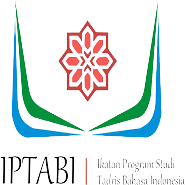SANUSI PANE DALAM UPAYA MENUMBUHKAN KECINTAAN TERHADAP BUDAYA DAN BAHASA INDONESIA: IMPLEMENTASI MELALUI MKWU BAHASA INDONESIA DI PERGURUAN TINGGI
DOI:
https://doi.org/10.15575/jelli.v1i1.208Keywords:
cultural and language value representation, literature work, Indonesian language MKWUAbstract
The history of the emergence of culture and language in Indonesia has been a long process. In fact, some of them involve several important shops in it, one of which is Sanusi Pane. Sanusi pane became one of the figures who contributed in the form of literary works in which there was a mandate to foster a love for Indonesian culture and language. However, in this modern era, Sanusi Pane is not well known by the millennial generation. The purpose of writing this article is to analyze the work of Sanusi Pane, in which there is an effort to foster a love for Indonesian culture and language. Then, the researchers attempted to implement these values through the Indonesian Language MKWU in universities. The method used in this research is qualitative using a content analysis approach. The text is studied using an objective literary study. By conducting an objective study, the researcher focuses on the text that is the material of the study. Then, the findings are analyzed based on aspects that contain love for culture and language. Furthermore, the findings are presented in the Indonesian language MKWU during the material history and language development.
References
Alisjahbana, S. T., Pane, S., & Purbatjaraka. (1935). Menuju Masyarakat dan Kebudayaan Baru Indonesia – Prae – Indonesia Menuju Masyarakat dan Kebudayaan Baru. Pujangga Baru dan Suara Umum.
Aulia, H. R. (2019). Urgensi Peran Kebudayaan Lokal dalam Pengajaran Bahasa Indonesia Bagi Penutur Asing (BIPA) Untuk Mahasiswa Asing. National Seminar Of PBI (English Language. Https://Proceeding.Unikal.Ac.Id/Index.Php/Nspbi/Article/View/267
Bahtiar, A., Erowati, R., & Haryanti, Novi Diah. (2019). Revolusi Dalam Dua Novel Indonesia : Sebuah Bandingan. Buletin Al-Turas. Https://Doi.Org/10.15408/Bat.V25i2.10228
Boeriswati, E. (2017). Persoalan Literasi Abad 21. Konferensi Bahasa Dan Sastra Indonesia II
Emzir. (2017). Metodologi Penelitian Pendidikan Kuantitatif & Kualitatif. In Metodologi Penelitian Pendidikan Kuantitatif & Kualitatif.
Moeliono, Anton M., Dewi Puspita, Dan M. A. (2011). Butir-Butir Perencanaan Bahasa: Kumpulan Makalah Dr. Hasan Alwi.
Nuryani, N., & Bahtiar, A. (2019). Peran Mkwu Bahasa Indonesia sebagai Penguat Identitas dan Nasionalisme Mahasiswa PTKI ( Studi Pelaksanaan MKWU Bahasa Indonesia Di Uin Syarif Hidayatullah Jakarta ) Struktural Bertanggung Jawab Kepada Pemerintah . Indonesia Memiliki Banyak Institusi Lemba. Jurnal Kembara, 5(2), 231–244. Https://Doi.Org/Https://Doi.Org/10.22219/KEMBARA.Vol5.No2.
Putri, N. P. (2017). Eksistensi Bahasa Indonesia Pada Generasi Millennial. Widyabastra.
Setyadi, A. (2017). Analisis Pernyataan “Utamakan Bahasa Indonesia”: “Ada Apa Dan Mengapa?” Nusa: Jurnal Ilmu Bahasa Dan Sastra. Https://Doi.Org/10.14710/Nusa.12.3.134-144
Silfiani, S. (2022). Nilai Estetis Pada Puisi “Sawah” Karya Sanusi Pane Dengan Pendekatan Stilistika. Concept: Journal Of Social Humanities And Education, 1(4). Http://Journal-Stiayappimakassar.Ac.Id/Index.Php/Concept/Article/View/76
Sugiyono. (2012). Metode Penelitian Kuantitatif, Kualitatif Dan R & D. Alfabeta. Https://Doi.Org/10.1017/CBO9781107415324.004
Sunardi, D. M. (1993). Arjuna Wiwaha. Books.Google.Com. Https://Books.Google.Com/Books?Hl=En&Lr=&Id=Cor3dqaaqbaj&Oi=Fnd&Pg=PP1&Dq=Arjuna+Wiwaha&Ots=Fmmeustuck&Sig=Jsxyusj3elhmwj_Kwar8r-Vsl30
Sutri, S. (2023). Intertekstual Puisi “Bukan Beta Bijak Berperi “Karya Rustam Effendi Dan Puisi “Sajak” Karya Sanusi Pane Serta Pemanfaatannya Dalam Materi Pembelajaran Puisi. Jurnal Pendidikan dan Konseling (JPDK), 5(2). Http://Journal.Universitaspahlawan.Ac.Id/Index.Php/Jpdk/Article/View/14092
Wahyudi, A. B. (2014). Metode Penelitian Kebahasaan. Jurnal Bahtera.
Downloads
Published
Versions
- 2023-08-17 (2)
- 2023-07-29 (1)
How to Cite
Issue
Section
Citation Check
License
Copyright (c) 2023 Syihaabul Hudaa, Ahmad Syaeful Rahman

This work is licensed under a Creative Commons Attribution-ShareAlike 4.0 International License.










